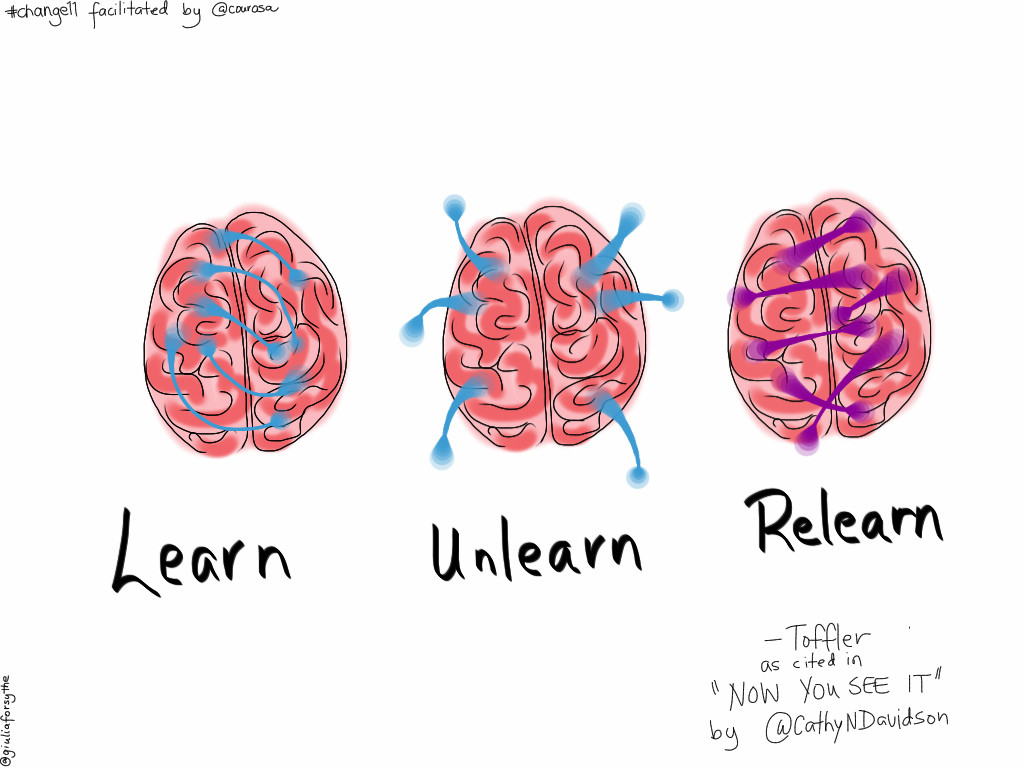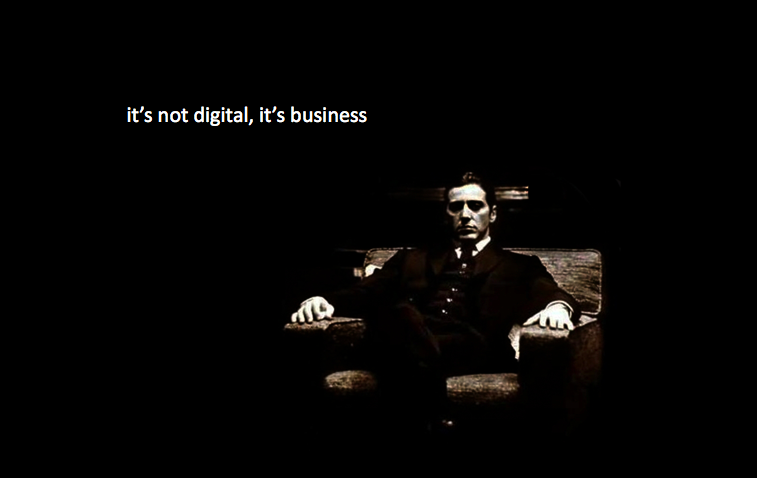I’ve started a number of keynote sessions this year, including the one I did at the i2 Summit (that’s the Internet & Intranet Summit) in Switzerland last week, with one of my favourite quotes from Alvin Toffler, the author of Future Shock:
“The illiterate of the 21st century will not be those who cannot read and write, but those who cannot learn, unlearn, and relearn. ”
As we advance well in to the second decade of the century this literacy lesson is painfully clear and important on several levels. I asked the conference audience in Switzerland of around 90 practitioners, technologists, marketers and internal communications professionals whether they had heard of the Cluetrain Manifesto, and only 3 hands went up. Depressing, but understandable. I need to be constantly reminded that we pioneers of the social media (and social tools) landscape who have been living and breathing and learning the lessons for maybe 10 years or more are merely the advanced guard. The overwhelming majority of very smart and technology literate people in business are usually just starting the digital and social journey. Their technology literacy extends to driving desktop, laptops, email, documents, spreadsheets and corporate, legacy IT systems. Even the ones who live in the apps on their smart phones, or have started using twitter, messaging apps and hashtags, or maybe they are sharing content, contributing to the enterprise social network – they still have many lessons to learn, as well as legacy behaviours that are tied to legacy technology that need to be unlearned.
There is cultural divide. Those that get it versus those that don’t. It doesn’t have to be an age thing, although Millennials who are “growing up digital” start closer to where they need to be in the new digital workplace. Back in the day we learned that markets are conversations. We learned about blogging and building community. We learned about the 90-9-1 rule (although people often call it 1-9-90). We heard Andrew McAfee talking SLATES – search, links, authorship, tags, extensions and signalling. Those basics haven’t gone away and need to be relearned.
This next level of literacy is framed around that “digital” word and the behaviours we need to learn to embrace its potential. I’ve talked and blogged under the banner of “everyone’s talking digital and it’s dangerous!” We’ve been talking about moving atoms to bits since 1995 with Nicholas Negroponte’s Being Digital book setting the tone, and we know that “software is eating the World” and now “mobile is eating the World” too. Every company and organisation has become, in part, a software company as technology becomes an ever growing component in the products and services we provide. Everyone’s business model is under threat by some smarter, nimbler competitor with a new way of doing the work (or part of the work). In your market it might be as significant as a Netflix or an Uber, but the disruptions you have to guard against can come in all shapes and sizes and at many points along the value chain. As organisations and businesses we have to think continuous reinvention, think about competing with ourselves – if we don’t somebody else will. These new business models, new ways of working, and digitisation of deliverables and processes or even parts of the process, all get wrapped up in the “d” word so that it’s about much more than just bits.
In 1985 or 1990 or 1995 or even 2000 you could have gone in to the new year with a reasonably clear answer to the question “what is the next big frontier in technology?”. In 2015 how do we answer that question? We’ve been used to big disruptions happening every 5 to 10 years, but the period we are in now is different. We now live in exponential times. At Agile Elephant we happen to call this new landscape the Digital Enterprise Wave, but there are many names for it. Globalisation, our interconnected World, Cloud, Social and Mobile technologies are at the heart of it, but we have Big Data & Analytics, 3D Printing, Artificial Intelligence, Machine Learning, the Internet of Things and more. It’s a wave of new and emergent technology – how do we ride that wave? Well for a start we need to adapt our existing organisations to the new norm. As organisations we have to evolve (or face extinction). Adding a Chief Digital Officer is a temporary fix – a bolt on solution where actually the “d” word and all that it means needs to be embraced by the CIO, the CMO, the CHRO, the CEO – well, across the whole organisation really. Every company is different and at different stages in that learning curve, but every company needs to be thinking in terms of new structures to adapt to and deal with the wave. The smart companies need to accelerate that learning, get literate and then fluent in the new language – look to the human side of the equation, the human interface dealing with the change is much more important than any individual technology change being brought in to the chain. Oh, and by the way, we are complicating the landscape by adding layers and silos and of new, often disconnected, communication tools and channels that make the digital workplace and the omni-channel connection to the customer even more of a challenge (or should I say mess!).
If you move the timeframe forward by a few years, we’ll be using different language. At the moment, the “d’ word is dangerously over-hyped, often misunderstood, but definitely useful. In those keynotes I’ve referenced Michael Corleone from The Godfather, when he tells Sonny, talking of how he is going to kill Solazzo and McCluskey, that “it’s not personal, it’s business”. I’ve paraphrased that to say “it’s not digital, it’s business”. This is just the way we do business now, but at some point we’ll drop the word or change it for something else. At the moment, the “d” word highlights that we need a new kind of thinking and a new literacy for our leaders, our middle managers, and for our people on the front line with customers, in their cubicles, or at their desks in their home offices. Now more than ever in this digital era, as organisations and people we need to learn, unlearn and relearn.
(top image from Giulia Forsythe on Flickr)


[…] I’ve started a number of keynote sessions this year, including the one I did at the i2 Summit (that’s the Internet & Intranet Summit) in Switzerland last week, with one of my favourite quotes f… […]